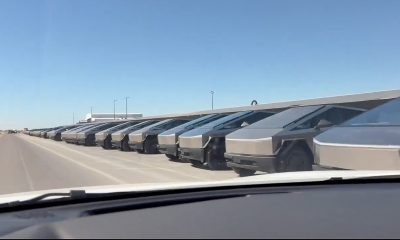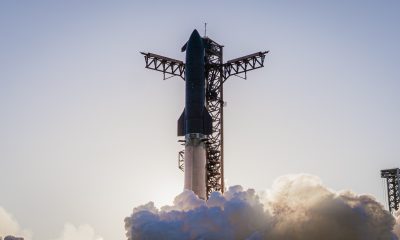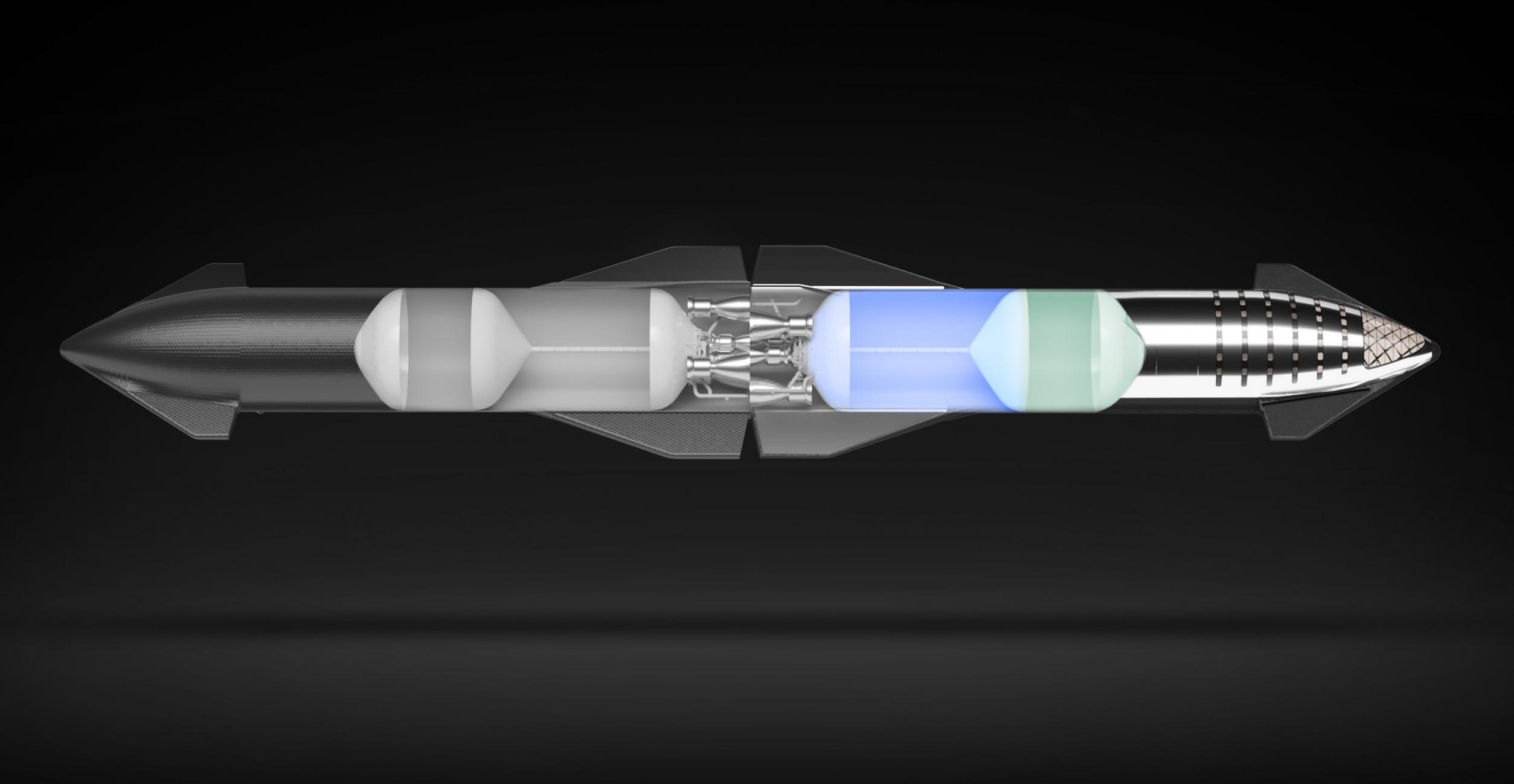

News
SpaceX’s path to refueling Starships in space is clearer than it seems
Perhaps the single biggest mystery of SpaceX’s Starship program is how exactly the company plans to refuel the largest spacecraft ever built after they reach orbit.
First revealed in September 2016 as the Interplanetary Transport System (ITS), SpaceX has radically redesigned its next-generation rocket several times over the last half-decade. Several crucial aspects have nevertheless persisted. Five years later, Starship (formerly ITS and BFR) is still a two-stage rocket powered by Raptor engines that burn a fuel-rich mixture of liquid methane (LCH4) and liquid oxygen (LOx). Despite being significantly scaled back from ITS, Starship will be about the same height (120 m or 390 ft) and is still on track to be the tallest, heaviest, and most powerful rocket ever launched by a large margin.
Building off of years of growing expertise from dozens of Falcon 9 and Falcon Heavy launches, the most important fundamental design goal of Starship is full and rapid reusability – propellant being the only thing intentionally ‘expended’ during launches. However, like BFR and ITS before it, the overarching purpose of Starship is to support SpaceX’s founding goal of making humanity multiplanetary and building a self-sustaining city on Mars. For Starship to have even a chance of accomplishing that monumental feat, SpaceX will not only have to build the most easily and rapidly reusable rocket and spacecraft in history, but it will also have to master orbital refueling.
The reuse/refuel equation
In the context of SpaceX’s goals of expanding humanity to Mars, a mastery of reusability and orbital refueling are mutually inclusive. Without both, neither alone will enable the creation of a sustainable city on Mars. A Starship launch system that can be fully reused on a weekly or even daily basis but can’t be rapidly and easily refueled in space simply doesn’t have the performance needed to affordably build, supply, and populate a city on another planet (or Moon). A Starship launch system that can be easily refueled but is not rapidly and fully reusable could allow for some degree of interplanetary transport and the creation of a minimal human outpost on Mars, but it would probably be one or two magnitudes more difficult, risky, and expensive to operate and would require a huge fleet of ships and boosters from the start.
The question of how SpaceX will make Starship the world’s most rapidly, fully, and cheaply reusable rocket is a hard one, but it’s not all that difficult to extrapolate from where the company is today. Currently, the turnaround record (time between two flights) for Falcon boosters is two launches in less than four weeks (27 days). SpaceX’s orbital-class reuse is also making strides and the company recently flew the same orbital Crew Dragon capsule twice in just 137 days (less than five months) – fast approaching turnarounds similar to NASA’s Space Shuttle average, the only other reusable orbital spacecraft in history.
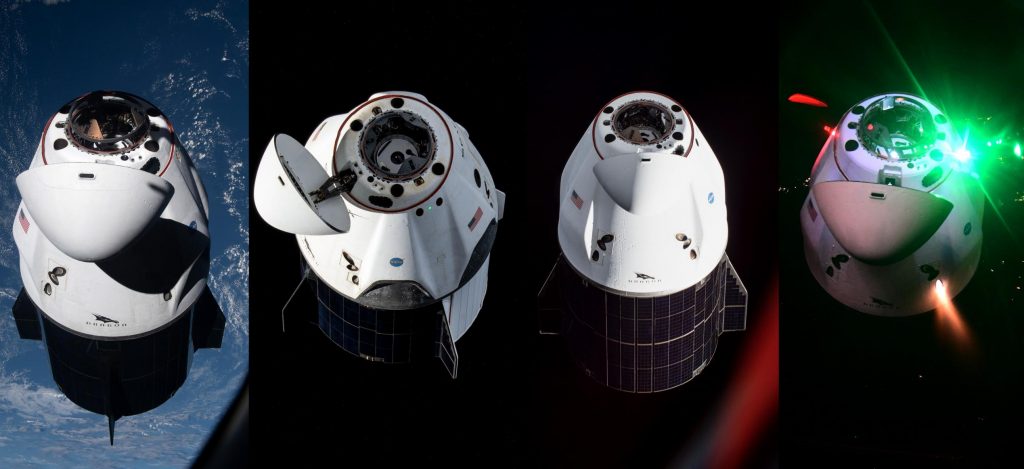
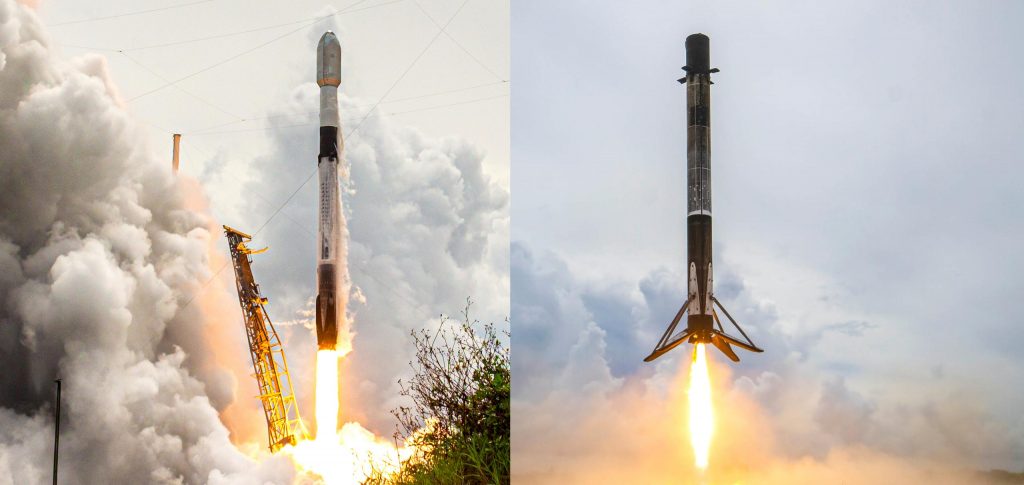
While Dragon and Falcon 9 are far smaller than Starship and Super Heavy, Dragon is only partially reusable and requires significant refurbishment after recovery and Falcon 9 boosters are fairly complex. Starship, on the other hand, should effectively serve as a fully reusable all-in-one Falcon upper stage, Dragon capsule, Dragon trunk, and fairing, making it far more complex but potentially far more reusable. To an extent, Super Heavy should also be mechanically simpler than Falcon boosters (no deployable legs or fins; no structural composite-metal joints; no dedicated maneuvering thrusters) and its clean-burning Raptor engines should be easier to reuse than Falcon’s Merlins. Put simply, there are precedents set and evidence provided by Falcon rockets and NASA’s Space Shuttle that suggest SpaceX will be able to solve the reusability half of the equation.
What about refueling?
The other half of that equation, however, could not be more different. The sum total of SpaceX’s official discussions of orbital refueling can be summed up in a sentence included verbatim in CEO Elon Musk’s 2017, 2018, and 2019 Starship presentations: “propellant settled by milli G acceleration using control thrusters.”

On the face of it, that simple phrase doesn’t reveal much. However, with a few grains of salt, hints from what the company’s CEO has and hasn’t said, and context from the history of research into orbital propellant transfer, it’s possible to paint a fairly detailed picture of the exact mechanisms SpaceX will likely use to refill Starships in space. The cornerstone, somewhat ironically, is a 2006 paper – written by seven Lockheed Martin employees and a NASA engineer – titled “Settled Cryogenic Propellant Transfer.” Aside from the obvious corollaries just from the title alone, the paper focuses on what the authors argue is the simplest possible route to large-scale orbital propellant transfer.
In orbit, under microgravity conditions, the propellant inside a spacecraft’s tanks is effectively detached from the structure. If a spacecraft applies thrust, that propellant will stay still until it splashes against its tank walls – the most basic Newtonian principle that objects at rest tend to stay at rest. If, say, a spacecraft thrusts in one direction and opens a hatch or valve on the tank in the opposite direction of that thrust, the propellant inside it – attempting to stay at rest – will naturally escape out of that opening. Thus, if a spacecraft in need of fuel docks with a tanker, their tanks are connected and opened, and the tanker attempts to accelerate away from the receiving ship, the propellant in the tanker’s tanks will effectively be pushed into the second ship as it tries to stay at rest.
The principles behind such a ‘settled propellant transfer’ are fairly simple and intuitive. The crucial question is how much acceleration the process requires and how expensive that continuous acceleration ends up being. According to Kutter et al’s 2006 paper, the answer is surprising: assuming a 100 metric ton (~220,000 lb) spacecraft pair accelerates at 0.0001G (one ten-thousandth of Earth gravity) to transfer propellant, they would need to consume just 45 kg (100 lb) of hydrogen and oxygen propellant per hour to maintain that acceleration.
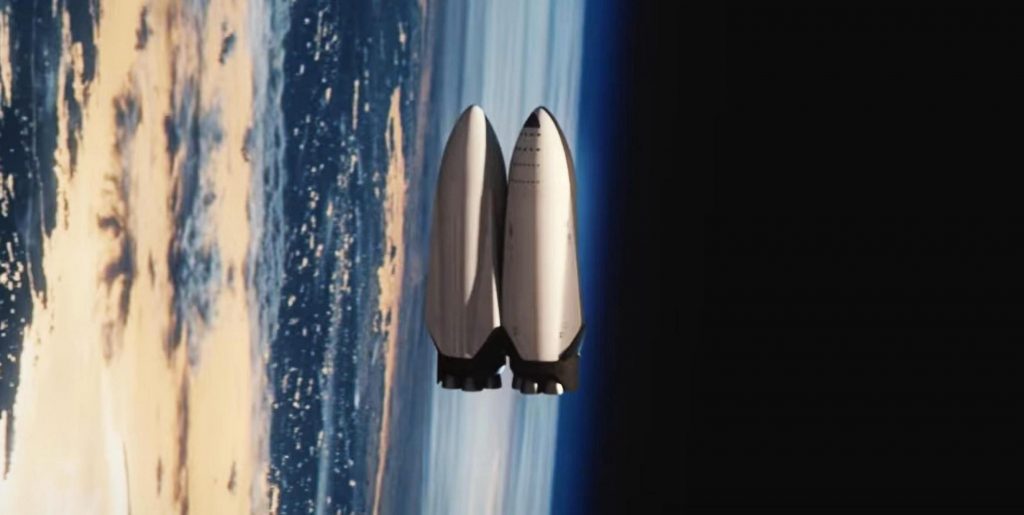
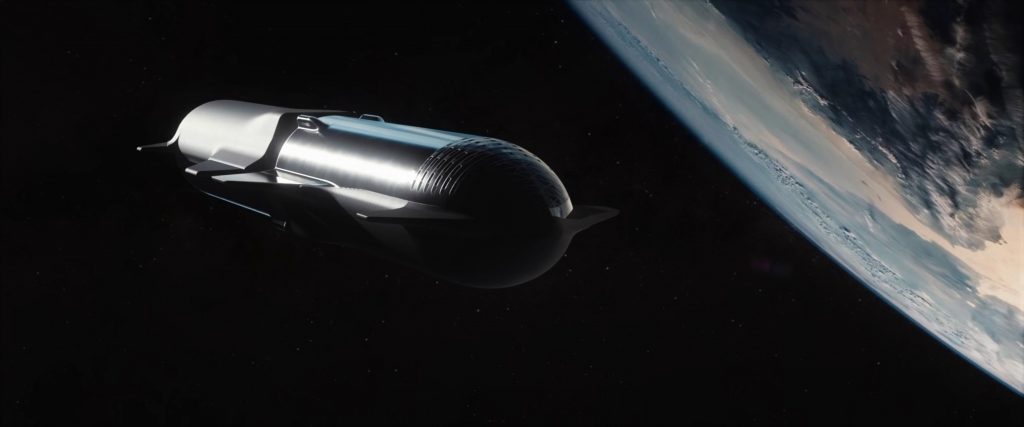
In the most extreme hypothetical refueling scenario (i.e. a completely full tanker refueling a ship with a full cargo bay), two docked Starships would weigh closer to 1600 tons (~3.5M lb) and the “Milli G” acceleration SpaceX has repeatedly mentioned in presentation slides would be ten times greater than the maximum acceleration analyzed by Kutter et al. Still, according to their paper, that propellant cost scales linearly both with the required acceleration and with the mass of the system. Roughly speaking, using the same assumptions, that means that the thrusting Starship would theoretically consume just over 7 tons (half a percent) of its methane and oxygen propellant per hour to maintain milli-G acceleration.
With large enough pipes (on the order of 20-50 cm or 8-20 in) connecting each Starship’s tanks, SpaceX should have no trouble transferring 1000+ tons of propellant in a handful of hours. Ultimately, that means that settled propellant transfer even at the scale of Starship should incur a performance ‘tax’ of no more than 20-50 tons of propellant per refueling. All transfers leading up to the worst-case 1600-ton scenario should also be substantially more efficient. Overall, that means that fully refueling an orbiting Starship or depot with ~1200 tons of propellant – requiring anywhere from 8 to 14+ tanker launches – should be surprisingly efficient, with perhaps 80% or more of the propellant launched remaining usable by the end of the process.


A step further, Kutter et al note the amount of acceleration required is so small that a hypothetical spacecraft could potentially use ullage gas vents to achieve it, meaning that custom-designed settling thrusters might not even be needed. Coincidentally or not, SpaceX (or CEO Elon Musk) has recently decided to use strategically located ullage vents to replace purpose-built maneuvering thrusters on Starship’s Super Heavy booster. If SpaceX adds similar capabilities to Starship, it’s quite possible that the combination of cryogenic propellant naturally boiling into gas as it warms and the ullage vents used to relieve that added pressure could produce enough thrust to transfer large volumes of propellant.
Last but not least, writing more than a decade and a half ago, the only technological barrier Kutter et al could foresee to large-scale settled propellant transfer wasn’t even related to refueling but, rather, to the ability to autonomously rendezvous and dock in orbit. In 2006, while Russia was already routinely using autonomous docking and rendezvous technology on its Soyuz and Progress spacecraft, the US had never demonstrated the technology on its own. Jump to today and SpaceX Dragon spacecraft have autonomously rendezvoused with the International Space Station twenty seven times in nine years and completed ten autonomous dockings – all without issue – since 2019.

Even though SpaceX and its executives have never detailed their approach to refueling (or refilling, per Musk’s preferred term) Starships in space, there is a clear path established by decades of NASA and industry research. What little evidence is available suggests that that path is the same one SpaceX has chosen to travel. Ultimately, the key takeaway from that research and SpaceX’s apparent use of it should be this: while a relatively inefficient process, SpaceX has effectively already solved the last remaining technical hurdle for settled propellant transfer and should be able to easily refuel Starships in orbit with little to no major development required.
There’s a good chance that minor to moderate problems will be discovered and need to be solved once SpaceX begins to test refueling in orbit but crucially, there are no obvious showstoppers standing between SpaceX and the start of those flight tests. Aside from the obvious (preparing a new rocket for its first flight tests), the only major refueling problem SpaceX arguably needs to solve is the umbilical ports and docking mechanisms that will enable propellant transfer. SpaceX will also need to settle on a location for those ports/mechanisms and decide whether to implement ullage vent ‘thrusters’, cold gas thrusters like those on Falcon and current Starship prototypes, or more efficient hot-gas thrusters derived from Raptors. At the end of the day, though, those are all solved problems and just a matter of complex but routine systems engineering that SpaceX is an expert at.

News
Tesla teases new market entrance with confusing and cryptic message

Tesla teased its entrance into a new market with a confusing and what appeared to be cryptic message on the social media platform X.
The company has been teasing its entrance into several markets, including Africa, which would be a first, and South America, where it only operates in Chile.
In September, Tesla started creating active job postings for the Colombian market, hinting it would expand its presence in South America and launch in a new country for the first time in two years.
The jobs were related to various roles, including Associate Sales Manager, Advisors in Sales and Delivery, and Service Technicians. These are all roles that would indicate Tesla is planning to launch a wide-scale effort to sell, manage, and repair vehicles in the market.
Last night, Tesla posted its latest hint, a cryptic video that seems to show the outline of Colombia, teasing its closer than ever to market entry:
— Tesla North America (@tesla_na) November 12, 2025
This would be the next expansion into a continent where it does not have much of a presence for Tesla. Currently, there are only two Supercharger locations on the entire continent, and they’re both in Chile.
Tesla will obviously need to expand upon this crucial part of the ownership experience to enable a more confident consumer base in South America as a whole. However, it is not impossible, as many other EV charging infrastructures are available, and home charging is always a suitable option for those who have access to it.
Surprisingly, Tesla seems to be more concerned about these middle-market countries as opposed to the larger markets in South America, but that could be by design.
If Tesla were to launch in Brazil initially, it may not be able to handle the uptick in demand, and infrastructure expansion could be more difficult. Brazil may be on its list in the upcoming years, but not as of right now.
@teslarati 🚨🚨 Tesla Full Self-Driving and Yap is the best driving experience #tesla #fsd #yapping ♬ I Run – HAVEN.
News
Tesla expands crucial Supercharging feature for easier access
It is a useful tool, especially during hours of congestion. However, it has not been super effective for those who drive non-Tesla EVs, as other OEMs use UI platforms like Google’s Android Auto or Apple’s iOS.
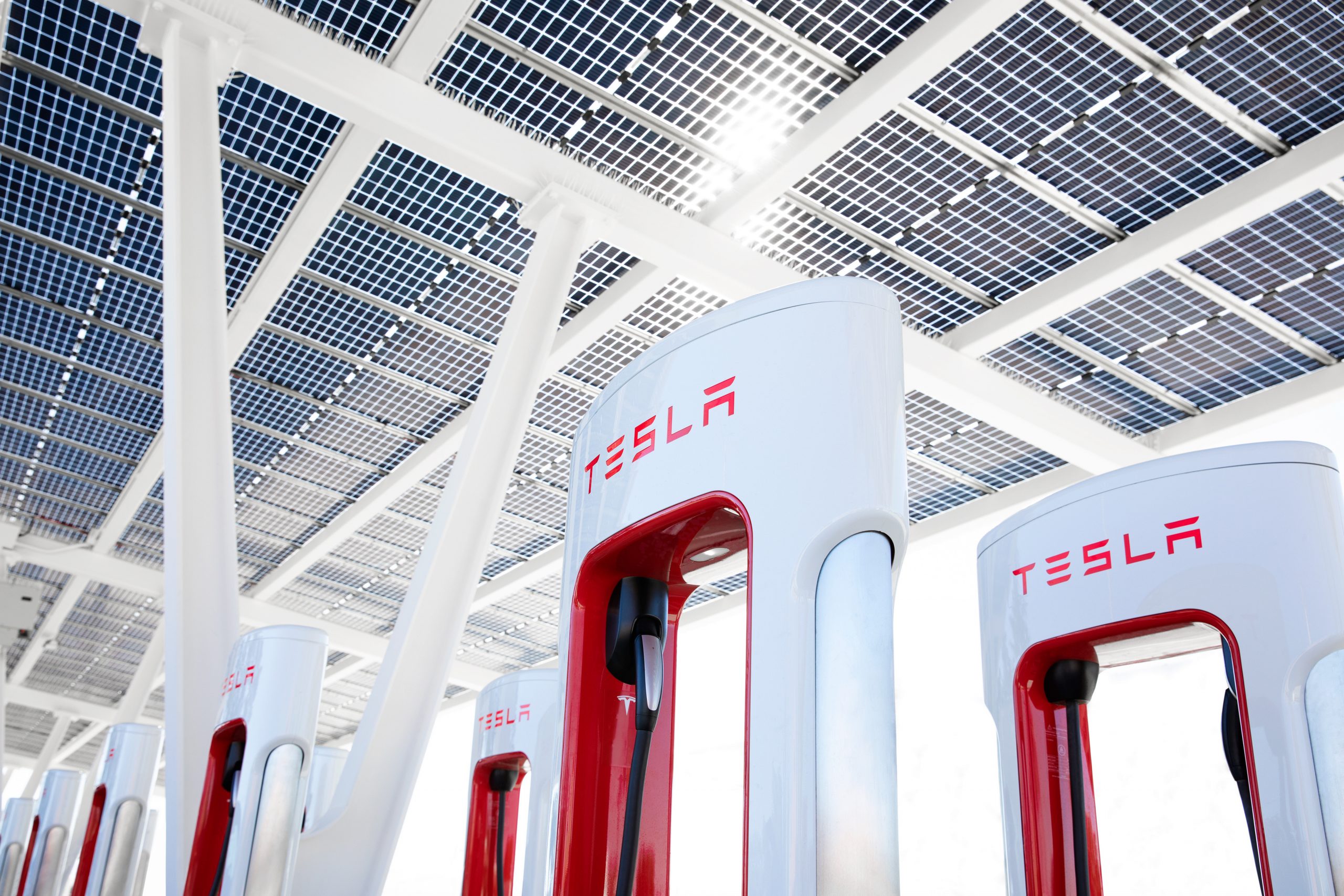
Tesla has expanded a crucial Supercharging feature that helps owners identify stall availability at nearby locations.
Tesla said on Tuesday night that its “Live Availability” feature, which shows EV owners how many stalls are available at a Supercharger station, to Google Maps, a third-party app:
Live availability of Superchargers now in Google Maps pic.twitter.com/DJvS83wVxm
— Tesla Charging (@TeslaCharging) November 11, 2025
Already offering it in its own vehicles, the Live Availability feature that Teslas have is a helpful feature that helps you choose an appropriate station with plugs that are immediately available.
A number on an icon where the Supercharger is located lets EV drivers know how many stalls are available.
It is a useful tool, especially during hours of congestion. However, it has not been super effective for those who drive non-Tesla EVs, as other OEMs use UI platforms like Google’s Android Auto or Apple’s iOS.
Essentially, when those drivers needed to charge at a Supercharger that enables non-Tesla EVs to plug in, there was a bit more of a gamble. There was no guarantee that a plug would be available, and with no way to see how many are open, it was a risk.
Tesla adding this feature allows people to have a more convenient and easier-to-use experience if they are in a non-Tesla EV. With the already expansive Supercharger Network being available to so many EV owners, there is more congestion than ever.
This new feature makes the entire experience better for all owners, especially as there is more transparency regarding the availability of plugs at Supercharger stalls.
It will be interesting to see if Tesla is able to expand on this new move, as Apple Maps compatibility is an obvious goal of the company’s in the future, we could imagine. In fact, this is one of the first times an Android Auto feature is available to those owners before it became an option for iOS users.
Apple owners tend to get priority with new features within the Tesla App itself.
Elon Musk
Elon Musk’s Boring Co goes extra hard in Nashville with first rock-crushing TBM
The Boring Company’s machine for the project is now in final testing.
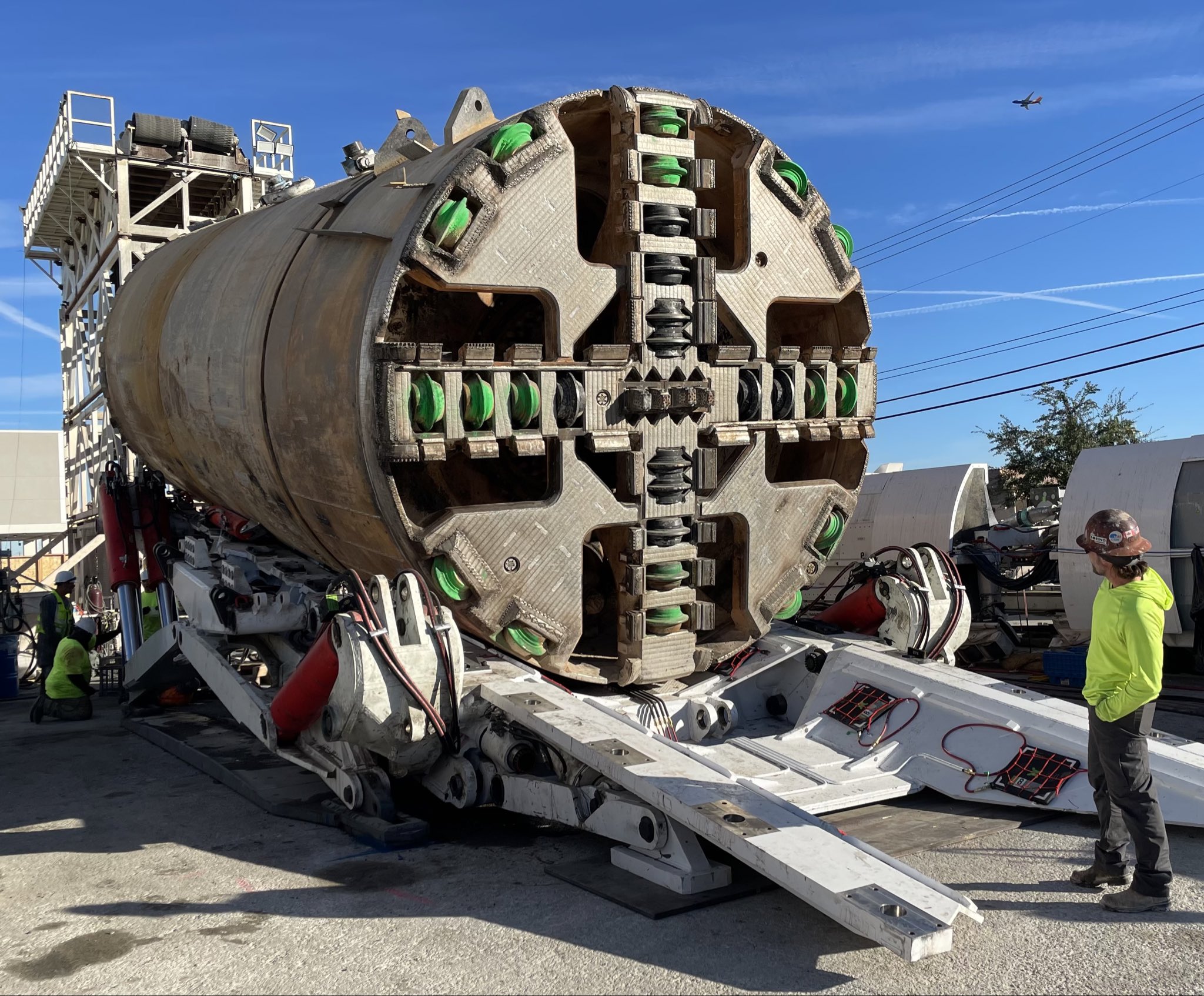
The Boring Company is gearing up to tackle one of its toughest projects yet, a new tunnel system beneath Nashville’s notoriously tough limestone terrain. Unlike the soft-soil conditions of Las Vegas and Austin, the Music City Loop will require a “hard-rock” boring machine capable of drilling through dense, erosion-resistant bedrock.
The Boring Company’s machine for the project is now in final testing.
A boring hard-rock tunneling machine
The Boring Company revealed on X that its new hard-rock TBM can generate up to 4 million pounds of grip force and 1.5 million pounds of maximum thrust load. It also features a 15-filter dust removal system designed to keep operations clean and efficient during excavation even in places where hard rock is present.
Previous Boring Co. projects, including its Loop tunnels in Las Vegas, Austin, and Bastrop, were dug primarily through soft soils. Nashville’s geology, however, poses a different challenge. Boring Company CEO and President Steve Davis mentioned this challenge during the project’s announcement in late July.
“It’s a tough place to tunnel, Nashville. If we were optimizing for the easiest places to tunnel, it would not be here. You have extremely hard rock, like way harder than it should be. It’s an engineering problem that’s fairly easy and straightforward to solve,” Davis said.
Nashville’s limestone terrain
Experts have stated that the city’s subsurface conditions make it one of the more complex tunneling environments in the U.S. The Outer Nashville Basin is composed of cherty Mississippian-age limestone, a strong yet soluble rock that can dissolve over time, creating underground voids and caves, as noted in a report from The Tennessean.
Jakob Walter, the founder and principal engineer of Haushepherd, shared his thoughts on these challenges. “Limestone is generally a stable sedimentary bedrock material with strength parameters that are favorable for tunneling. Limestone is however fairly soluble when compared to other rack materials, and can dissolve over long periods of time when exposed to water.
“Unexpected encounters with these features while tunneling can result in significant construction delays and potential instability of the excavation. In urban locations, structures at the ground surface should also be constantly monitored with robotic total stations or similar surveying equipment to identify any early signs of movement or distress,” he said.
-

 News5 days ago
News5 days agoTesla shares rare peek at Semi factory’s interior
-

 Elon Musk5 days ago
Elon Musk5 days agoTesla says texting and driving capability is coming ‘in a month or two’
-

 News4 days ago
News4 days agoTesla makes online ordering even easier
-

 News4 days ago
News4 days agoTesla Model Y Performance set for new market entrance in Q1
-

 News5 days ago
News5 days agoTesla Cybercab production starts Q2 2026, Elon Musk confirms
-

 News5 days ago
News5 days agoTesla China expecting full FSD approval in Q1 2026: Elon Musk
-

 News6 days ago
News6 days agoTesla Model Y Performance is rapidly moving toward customer deliveries
-
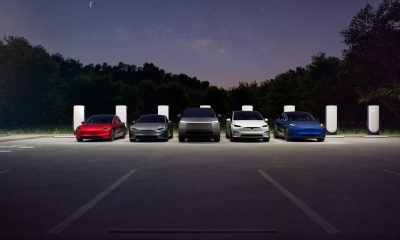
 News3 days ago
News3 days agoTesla is launching a crazy new Rental program with cheap daily rates


